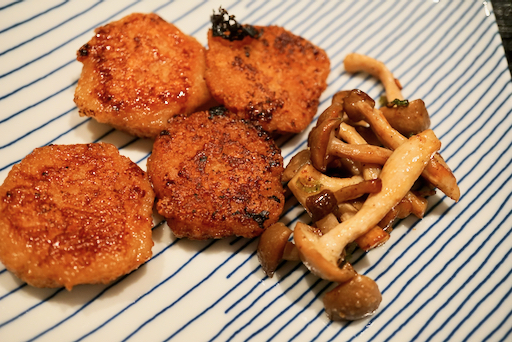Japanese “Nabe” 鍋 hot pot is a dish that is cooked at the table while you eat. Classically, a portable butane-canister gas cooker is used with a “Do-nabe” 土鍋 earthen-ware pot. We used to have a butane table top cooker for nabe and
sukiyaki すき焼き but because of safety concerns, which mainly stemmed from the age of our canisters and cooker, we looked for an alternative which turned out to be a table-top induction cooker (or the Japanese term is “IH”, short for induction heater). For this to work, you have to use IH compatible pots and pans. Traditional Japanese nabe earthen-ware pots are certainly not IH compatible. We eventually found an
IH compatible nabe from Kinto which worked great. Only complaint (which may not be important to many) is that while the pot worked well it is a very modern-appearing ceramic and does not have the traditional look of nabe. (I missed the homey nostalgic feel of a nabe which just the sight of the traditional design pot can evoke for me.)
Recently, I found
an IH compatible nabe which is made of traditional “Banko-ware” 万古焼 pot called “Gipo Hanamishima Banko-yaki pot” 銀宝花三島万古焼土鍋 in an on-line store called “
Japanese taste”. This is where we got dried persimmon or “
hoshigaki” 干し柿. The “Japanese taste” ships items directly from Japan but it comes relatively quickly*. In any case, we got this “IH compatible do-nabe” pot last year but did not have a chance to use it until now. In the picture below, the left is “Kakomi” IH donabe from
Kinto and the right is new Ginpo IH compatible donabe.
*We later learned that this pot is available at
Amazon USA.
To make a donabe IH compatible, a magnetic metal disk needs to be present between the induction cooker surface and donabe. Both these induction compatible donabes took a bit of a different approach.
Kinto donabe has a metal disk embedded into the bottom of pot as seen below. It can be used on gas, induction, and or halogen (electric heating element) cook tops. But not in a microwave oven.
Gipo comes with a stainless steel perforated disk which snaps into the inside bottom of the pot (apparently Ginpo has a patent). There are metal hooks and the inside bottom of the pot is formed to accept and secure this disk. It can be removed for cleaning and using the pot in a microwave. We initially tried it on our old induction cooktop (at least 18 years old which works with our cast iron sukiyaki pot and Kinto donabe). The Gipo donabe, however, did not work with the old induction cooker. The cooker issued an error message which essentially read “NO-CAN-DO”. I read the instructions that came with the Gipo donabe and found out that it may not be compatible with older IH cookers. Great. Which meant we would be getting
a new table top induction cooker to complete the set. It was not too expensive.
The new one is much better; the surface is completely covered with glass and easy to clean and the controls are more advanced. The new cooker worked with the Ginpo donabe. Actually, it boiled the liquid inside much quicker. I assume that because the metal disk is in contact with the liquid.

We enjoyed our nabe dish. The main protein was cod and oyster. The cod was great. The oysters, however, were a different story. Digression alert: We are having a difficult time getting good oysters, especially Pacific oysters. For this dish we got small (eastern) frozen oyster but they tasted terrible. Luckily they did not ruin the flavor of the rest of the nabe. We ended up throwing out the remainder of the oysters in the package.
The other items in the nabe included nappa cabbage, tofu, diakon, mushrooms (enoki, oyster, shiitake and shimeji). I also added “fu” 麩 gluten cake. I made a broth with dried kelp and a dashi pack and, and for a change, seasoned the simmering liquid with miso (miso, mirin and sake).
Somehow, this new do-nabe is esthetically more pleasing (at least for me) and works great. Since this is a genuine earthen ware pot, you should not keep the contents in the pot over night.


















































